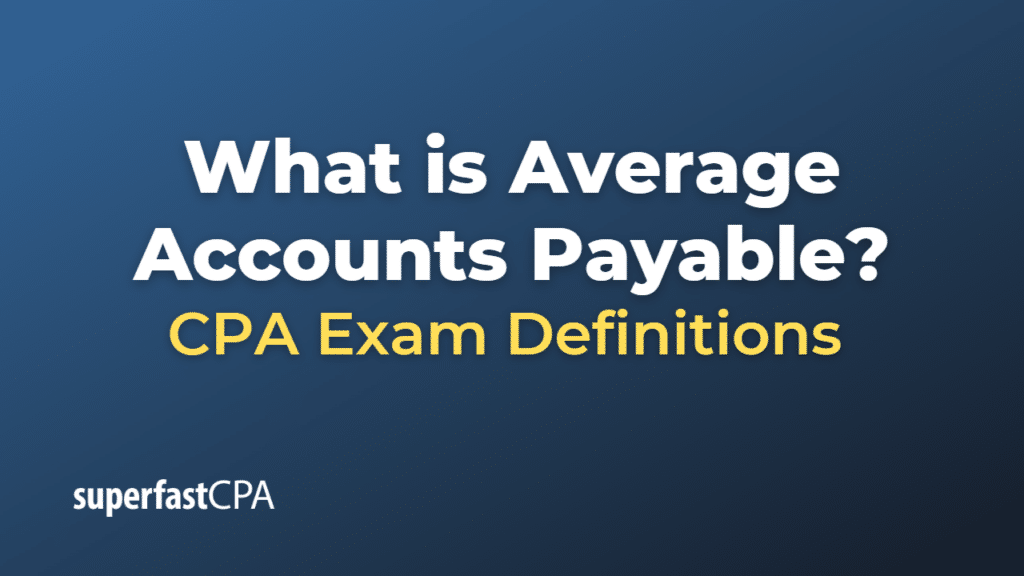Average Accounts Payable
Average accounts payable is a financial metric used to measure a company’s average outstanding payables over a specific period, such as a month, quarter, or year. It represents the average amount owed to suppliers for goods or services purchased on credit during that period. This metric is useful in analyzing a company’s cash management and short-term liquidity position.
To calculate average accounts payable, you can use the following formula:
\(\text{Average Accounts Payable} = \frac{\text{Beginning Accounts Payable + Ending Accounts Payable}}{2} \)
Where:
- Beginning Accounts Payable: The amount of accounts payable at the start of the period.
- Ending Accounts Payable: The amount of accounts payable at the end of the period.
Example of Average Accounts Payable
Let’s say a company has the following accounts payable balances for a specific quarter:
- Beginning Accounts Payable: $10,000
- Ending Accounts Payable: $15,000
Using the formula mentioned earlier, we can calculate the average accounts payable for that quarter:
\(\text{Average Accounts Payable} = \frac{\text{Beginning Accounts Payable + Ending Accounts Payable}}{2} \)
\(\text{Average Accounts Payable} = \frac{10,000 + 15,000}{2} \)
\(\text{Average Accounts Payable} = \frac{25,000}{2} \)
\(\text{Average Accounts Payable} = 12,500 \)
In this example, the company’s average accounts payable for the quarter is $12,500. This means that, on average, the company owed $12,500 to its suppliers during that period.













